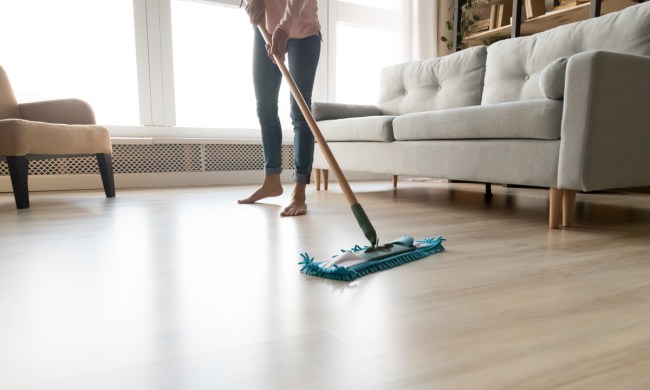
Hand-washing clothes may seem like a chore from another era, but it’s a skill that can save many of your delicate and cherished garments from wear and tear. Whether you’re dealing with vintage lace or a favorite cashmere sweater, knowing how to hand-wash clothes properly can extend the life of your garments and keep them looking their best for years to come. Here’s our step-by-step laundry guide to help you through the hand-washing process.
When should you hand-wash your clothes?

Knowing when to opt for hand-washing over tossing your clothes in the machine is crucial. Any garment labeled as “hand-wash only” should be treated with care to avoid damage. Additionally, items made from delicate fabrics such as silk, wool, or lace should also be hand-washed to prevent stretching, shrinking, or tearing.
Is “delicate” the same as “hand-wash?”

While many delicate fabrics may require hand-washing, not all garments labeled as “delicate” necessarily need this treatment. It’s essential to check the care label on each item for specific instructions. Some delicate items may be suitable for a gentle cycle in the washing machine, while others truly require the gentle touch of hand-washing.
How to hand-wash clothes in 5 simple steps
Hand-washing clothes doesn’t have to be a headache. Follow these simple steps to ensure your garments are cleaned effectively without risking damage.

1. Pre-treat any fabric stains
Before immersing your garments in water, take the time to pre-treat any stubborn stains. Different types of stains may require different treatments, so be sure to use an appropriate stain remover or spot treatment based on the fabric and the nature of the stain.
2. Combine soap and water
Fill a basin, sink, or tub with lukewarm or room-temperature water and add a gentle laundry detergent specifically formulated for hand-washing. Avoid using hot water, as it can cause certain fabrics to shrink or fade. Be mindful not to overdo it with the detergent, as excess soap can leave detergent stains on your clothes. Generally, 1 teaspoon of detergent for every pound of fabric is sufficient.
3. Wash and soak
Agitate the water to create suds, then immerse your garments, one at a time, into the soapy water. Use your hands to gently massage the fabric, paying special attention to areas with stains or built-up grime. Allow the garments to soak for at least 15 to 30 minutes to loosen dirt and oils.
4. Rinse
After soaking, drain the soapy water and refill the basin with clean, lukewarm water. Rinse each garment thoroughly, gently squeezing out excess water as you go. Be careful not to wring or twist the fabric too vigorously, as this can cause damage, especially to delicate materials like silk or lace.
5. Let the fabric dry
Once rinsed, carefully remove excess water from the garments by gently pressing them between clean towels. Depending on the fabric, you can either hang the garments to air-dry or lay them flat on a clean, dry surface.
Hang-drying vs. lying flat to dry

When it comes to drying your clothes, hang sturdier fabrics like cotton or denim to maintain their shape, promote airflow, and prevent shrinking. Delicate items, such as knitwear or silk should be laid flat to prevent stretching. Choosing the appropriate drying method ensures your garments retain their integrity and longevity.
Mastering the art of hand-washing clothes is a valuable skill that can help you preserve the beauty and longevity of your favorite garments. By following these simple steps and treating your clothes with care, you can ensure they stay looking fresh and fabulous for years to come. So the next time you’re faced with a “hand-wash only” label, don’t despair — embrace the opportunity to give your clothes the TLC they deserve.



